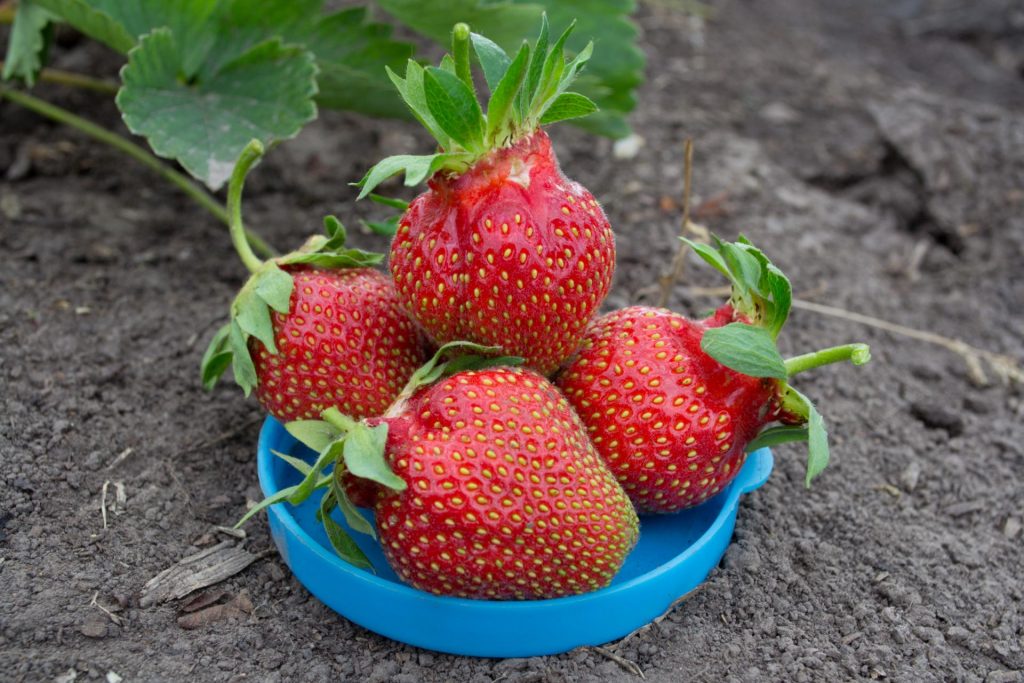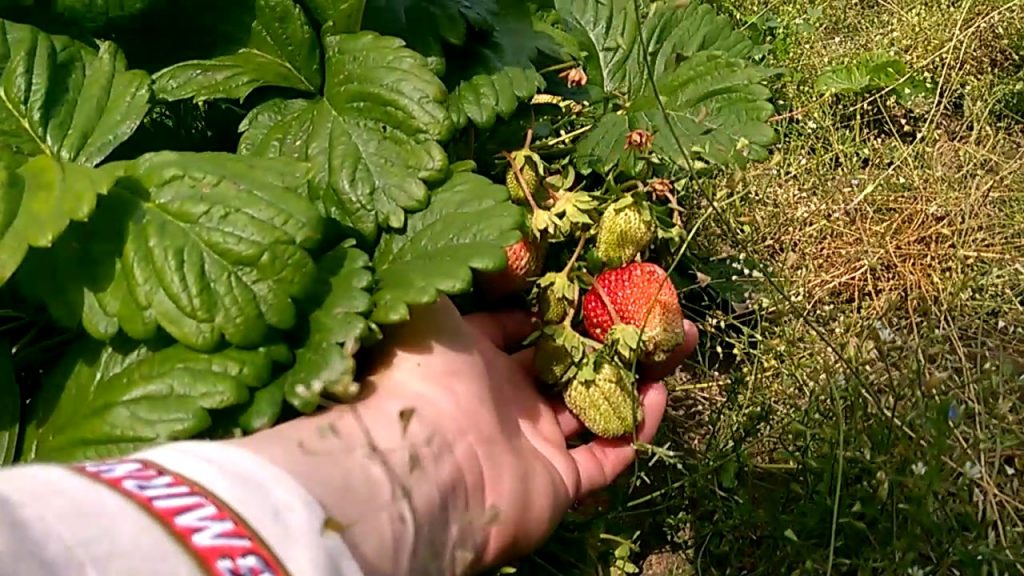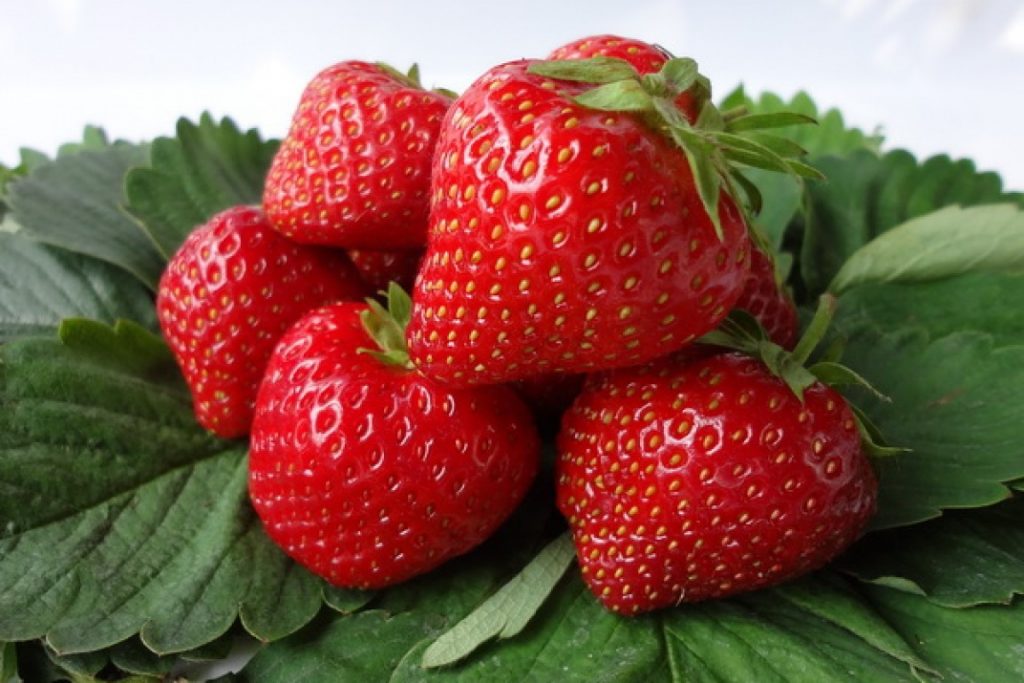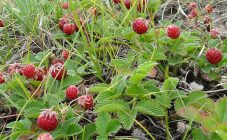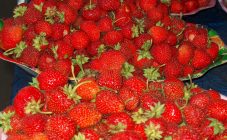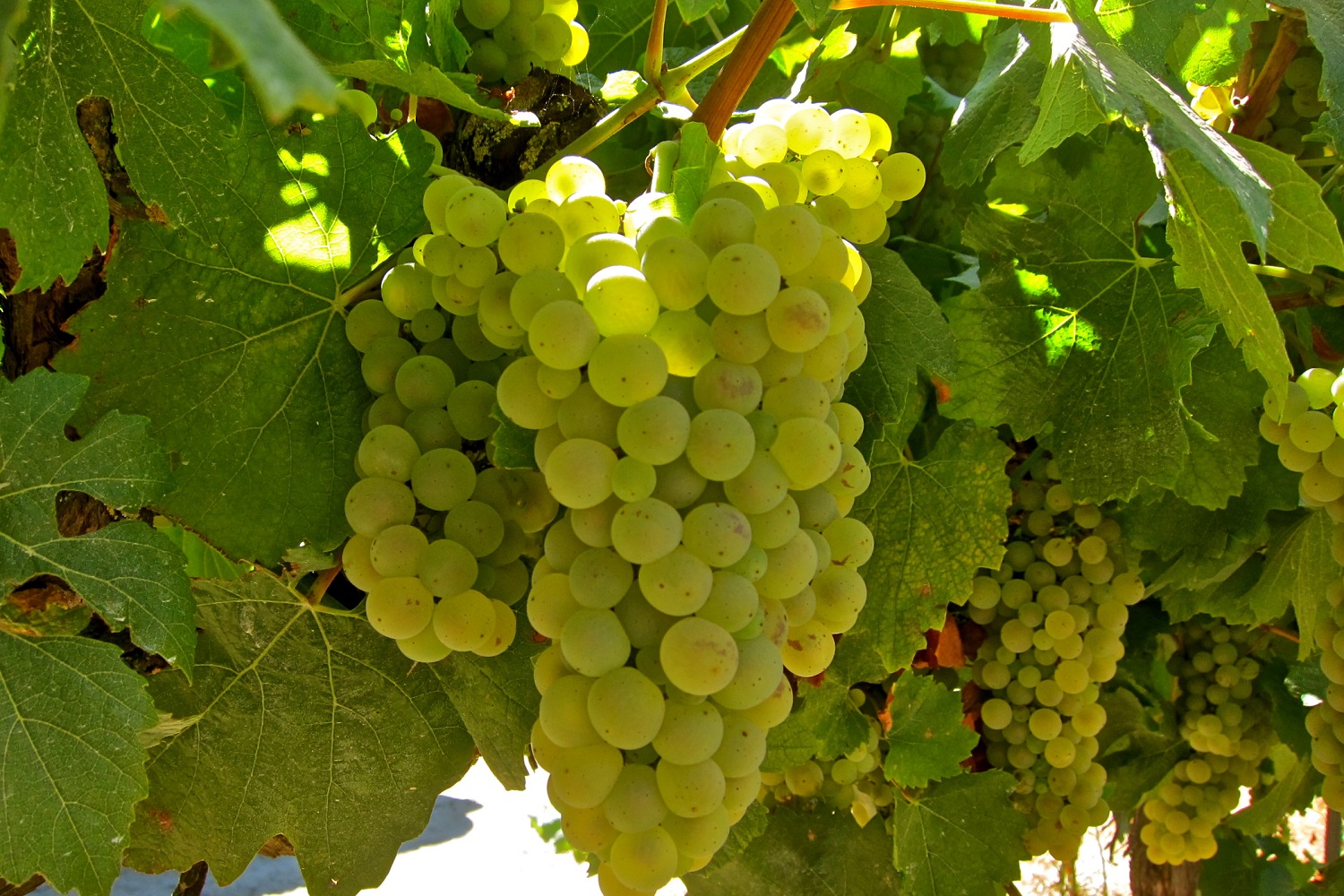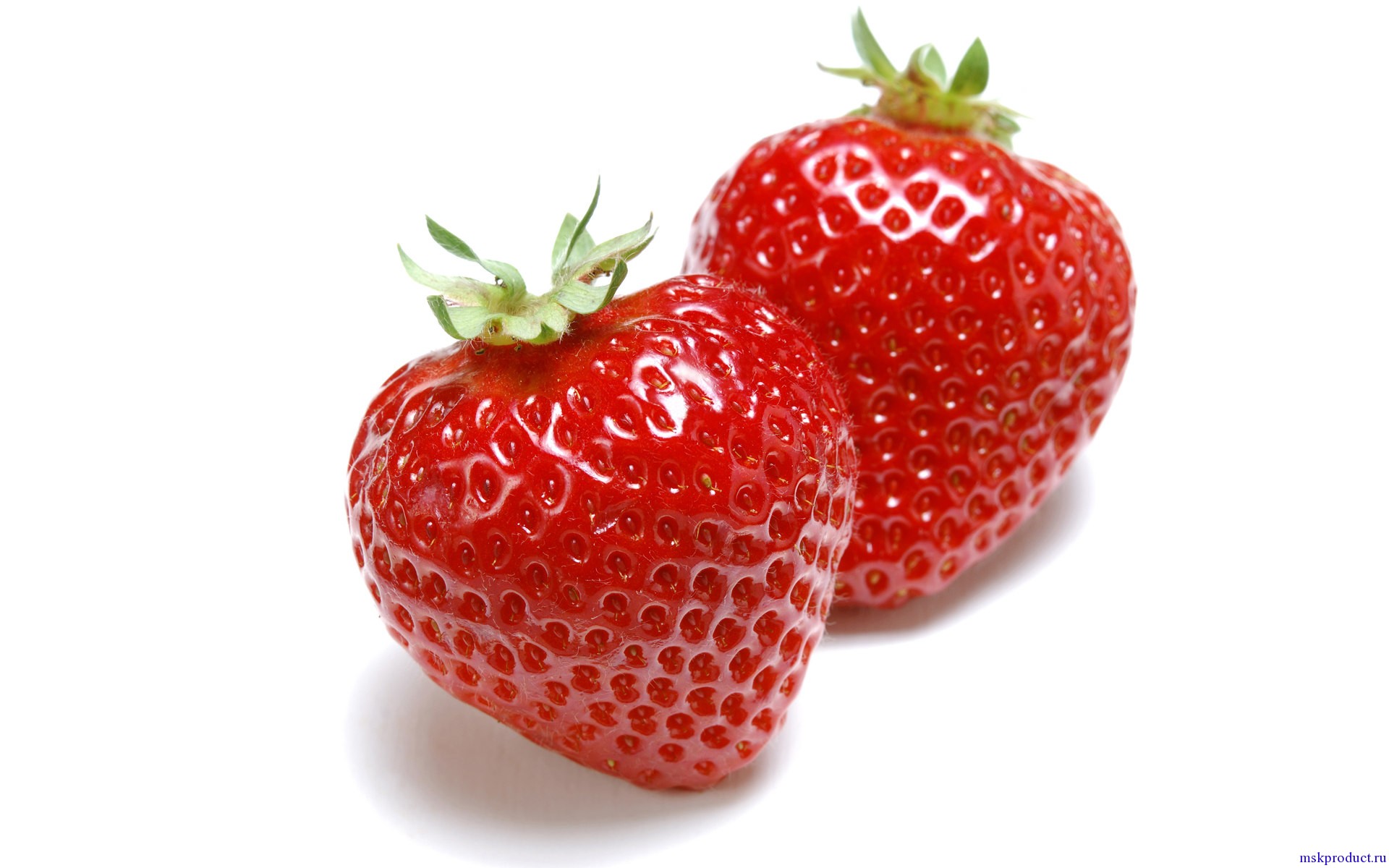Content:
Few varieties of strawberries can successfully withstand the low temperatures of winter. This berry survives the winter without problems. It is useful, contains a large amount of vitamin C, sugar, useful acid. In accordance with the description of the variety, in the State Register, the Queen's strawberry is drought-resistant, winter-hardy, and tolerates heat well.
History of creation
Russian breeders are in constant search of a new, improved variety that could withstand the winter cold. Professor of the Bryansk Agricultural Academy, Doctor of Agricultural Sciences S.D. Aytzhanova succeeded. She became the author of a new variety, crossing the Lithuanian Venta with the Scottish Red Gauntlet at the Kokinsky VSTISP support point in the Bryansk region. “Tsarina”, entered in the State Register for the central region of Russia in 2009, inherited the best properties of its predecessors. It can be cultivated in areas with cool climates.
Main characteristics and features
The Queen's strawberries do not have the properties of remontant brethren, as they are summer varieties, yielding a crop once. It is mid-ripening in terms of ripening - the first berries appear in the second decade of June. The bush consists of dark, rather large green, smooth leaves with obtuse teeth without pubescence. Sparse, squat, compact.
Height and foliage are average. The bush throws out a moderate amount of mustache of medium thickness, having a pale red tint and strong pubescence. Large white flowers are few in number and develop within a short time. It takes a month to form the ovary and fruit.
Not very long stalks are located under the foliage. They are unable to hold onto the dark red, shiny berries that hang down on the ground. They have no neck, rounded, conical shape. Large-fruited strawberries can be called only partially, only the first collection is distinguished by large berries (up to 50-60 g). Subsequent ones give a smaller harvest, the weight of the fruit is from 12 to 35 g. The red pulp of a dense consistency has a weak strawberry aroma and an excellent sweet and sour taste.
During the growing season, you can get an average yield of 400-700 grams of juicy berries per bush. Glossy fruits with a harmonious flavor (estimated at 4.8 points out of five) can be enjoyed until the beginning of autumn. This versatile variety is used for fresh consumption, suitable for freezing, making jelly, preserves, jam, compotes.
In terms of heat resistance, the garden strawberry Queen has high rates, is tolerant to drought. Shows good winter hardiness. Judging by the reviews of agronomists, the frost resistance of plants is average, freezing of generative buds is possible at frosts of about -15 ° C. Many amateur gardeners, with a sufficient amount of snow, manage to maintain plantings at -30 ° C without shelter. In regions where there is insufficient precipitation in winter, the sites have to be covered with agrofibre, foliage, spruce branches or plant stems. They also perform a snow retention function.
Disease and pest resistance
The crop is resistant to diseases and pests as well as other standard varieties.Experts focus on its immunity to fungal infections, diseases of the root system, leaf spot.
Some summer residents claim that strawberries can be attacked by a strawberry mite. They put it at the top of the list of varieties that are most often affected by sucking insects. From the reviews of gardeners it follows that this variety, on the contrary, does not lend itself to the influence of the pest. The resistance of the berry culture to slugs is well formed, which do not actually spoil the harvest.
Aphid colonies cause great harm to the plots, the presence of which becomes the reason for the cessation of growth, leaf coagulation, deformation of the ovary, twisting of shoots. Agronomists are faced with the defenselessness of the culture when a small shaggy bug called Bronzovka (Alenka) Shagnataya appears in the garden, which can destroy the crop by eating the yellow centers of the flowers.
Agrotechnics
The culture is recommended for cultivation in most of the regions of Russia, Ukraine, Belarus, where the temperate continental climate prevails. For successful cultivation, when conducting agrotechnical measures, the peculiarities of the Queen should be taken into account.
Soil and fertilizers
Strawberries take root in any soil, but it will be better to grow on:
- black soil rich in potassium, a sufficient amount of which will be replenished by ash introduced into the soil;
- loamy soils;
- sandy loam areas.
Before planting, the planned garden bed must be filled with organic matter: manure, peat or compost. For this purpose, it is good to use humus, although in this case there is a risk of transferring the larvae of the beetle into the soil. Use of nitrogen-containing fertilizers will be useful for garden strawberries.
Planting strawberries
There is no need to rush with it, it is better to carry it out 2-3 weeks after digging. This period is given for the shrinkage of the earth, otherwise the rosettes of the roots will become bare, which is highly undesirable. Taking into account the compactness of the bush and a slight increase in subsequent years, it is recommended to plant the rooted mustache according to the scheme 40x40 cm or 35x35 cm.
Plant care
Fruit size, yield and other parameters are entirely dependent on proper care. Despite its drought tolerance, watering should not be ignored. In dachas, vegetable gardens, small plantations where it grows, it is advisable to use a drip system, especially in the southern and southeastern territories. It is imperative to mulch the distance between the rows with sawdust, straw, hay, you can cover the ground with a dark film or cardboard.
This must be done for several reasons:
- Mulch prevents moisture evaporation and soil cracking.
- The berries remain clean even after precipitation, since their contact with the ground is excluded.
- Mulching prevents weed seeds from germinating.
Traditionally, at the end of fruiting, the plants are mown. Experts consider such a technique to be erroneous; they do not advise using it.
Spring feeding
They are carried out in the spring, mixing ash, nitrophosphate, urea with complex fertilizers. Foliar feeding with Azofoska, which includes nitrogen, phosphorus and potassium, will be useful. This event is good during flowering and ovary formation. Focusing on potassium, plants need to be provided with trace elements (manganese, iron, boron and others).
Pest control
Having discovered the presence of unwanted guests in the personal plot, it is necessary to take preventive measures. Processing can be carried out using one of the folk methods or sprayed with chemical protection agents.
Advantages and disadvantages of the variety
There are not many household plots where strawberries are not grown.
The queen was liked by connoisseurs of fragrant berries, thanks to his merits:
- endurance and drought resistance;
- pleasant sweet and sour taste;
- symmetrical, almost perfect berry shape;
- disease resistance;
- good enough transportability;
- the sparseness of the bush, which facilitates processing when pests appear.
The disadvantages of "royal" berries are often considered the need to organize snow retention and protection of plantings. The downside is the average yield. In addition, there are remarks about the poor separation of the sepal from the fruit.
But this does not interfere with growing the Queen on personal plots, using her for processing in farms. After all, it is appreciated for its excellent taste, beautiful luxurious berries and unpretentiousness.
